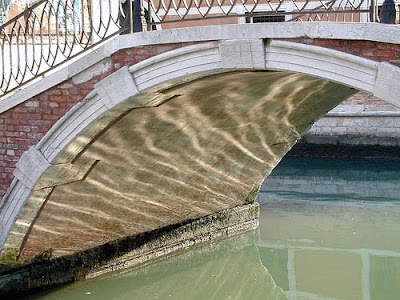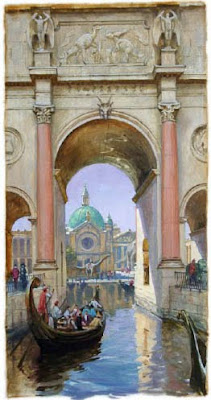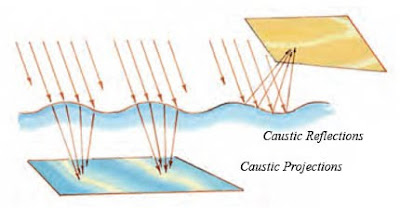Los Angeles Times art critic Christopher Knight gives the “thumbs down” to academic painter Jean-Leon Gérôme (1824-1904), who is featured in a large exhibition currently at the Getty Museum.

Knight dismisses Gérôme as a “populist painter” who “didn’t have a clue,” and who indulged in “sword-and-sandal melodramas.” He argues that he failed the Prix de Rome competition through lack of drawing ability, later selling out to commercial considerations.
According to Knight, “every artist we revere today was on the other side” of Gérôme and that he failed because he “disengaged with art’s possibilities” by limiting his artwork to mere illusionism.
Although Gérôme’s artwork is not above criticism, Mr. Knight’s assessment is regrettably narrow and unfair.
The documentary evidence from writers of Gérôme’s own day paints a more sympathetic and nuanced portrait of the man and his art.

Gérôme was genuinely respected by critics his day, and by his students, even many who pursued an impressionist approach to painting. He was admired not just for his ability as an artist, but for the breadth of his artistic vision.
Consider the following:
“Gérôme remains at sixty years of age the same as he was at thirty-six: as youthful, vigorous, active, and wiry; full of life and sympathetic. An agreeable, gay talker, pensive notwithstanding his good humor, respectful of his art, frank and loyal, adored by his pupils, he is the professor who teaches the young those rare and neglected virtues: simplicity, study, and labor. In a word he is a noble example of what a master-painter of the nineteenth century may be: an artistic soul with a soldier’s temperament, a heart of gold in an iron body.”
--French critic Jules Claretie, quoted in Nancy Douglas Bowditch, George de Forest Brush: Recollections of a Joyous Painter.

“I cannot but esteem him as one of the masters and most distinguished men of his age.”
--J. Alden Weir, “Open Letters.”
“As a teacher he is very dignified and apparently cold, but really most kind and soft-hearted, giving his foreign pupils every attention. In his teaching he avoids anything like recipes for painting; he constantly points out truths of nature and teaches that art can be attained only through increased perception and not by processes. But he pleads constantly with his pupils to understand that although absolute fidelity to nature must be ever in mind, yet if they do not at last make imitation serve expression, they will end as they began—only children.”
--George de Forest Brush, in “Open Letters: American Artists on Gerome,” Century magazine, February 1889.
“Oblivious to methods, seeking to develop each pupil’s peculiarities and temperament, he frowned upon any attempt to follow in his ways unless he thought it entirely within the sympathies of the pupil.”
--Wyatt Eaton, “Open Letters.”

Let us allow Mr. Gérôme to rise from the grave and answer Mr. Knight with his own words: “As to the self-styled critics, their approbation and their raillery have always found me indifferent, for I have always had the most profound contempt for these ignorant vermin, who prey upon the bodies of artists.…These art critics, whose ignorance is often deplorable,—quite encyclopædic in fact,—who have not learned the a b c of our profession, consider themselves fully competent to criticize it.”
-- Gérôme quoted in Century magazine, February, 1889, page 488 and 495.
The exhibition “The Spectacular Art of Jean-Léon Gérôme will remain on view at the Getty Museum in West Los Angeles through September 12, 2010. The first exhibit of its kind in nearly 40 years, it contains 99 works by Gérôme and his contemporaries.
LA Times review.
Getty museum website
Century magazine archives
Jean Leon Gerome.org (big database of image)
Thanks, Dave!
 We opened it and poured the contents on the table. It was a jigsaw puzzle, but there was no picture on the package. The pieces were crisply sawn out of cherry plywood.
We opened it and poured the contents on the table. It was a jigsaw puzzle, but there was no picture on the package. The pieces were crisply sawn out of cherry plywood.  Some of the pieces were cut in silhouettes. There was a snake, a clown, a dollar sign, a dog, and a boy and a girl holding hands. Someone had carefully cut around the shape of a face.
Some of the pieces were cut in silhouettes. There was a snake, a clown, a dollar sign, a dog, and a boy and a girl holding hands. Someone had carefully cut around the shape of a face.  We had such fun building the puzzle that we have decided to make it an annual tradition.
We had such fun building the puzzle that we have decided to make it an annual tradition.





















































